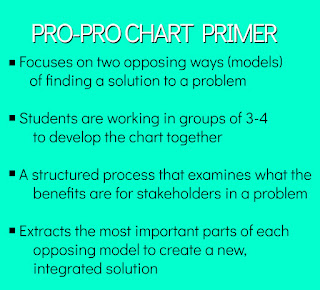Playing with Purpose
A little while ago The Shift wrote about the Three (Silent) P’s of Innovation. Simply put they are
Permission: educators need to feel that they have the permission to try something new
Protection: innovators should feel that they are protected if something goes sideways
Policy: people need assistance in navigating the policies that may slow down innovation
We’ve worked within these three P’s for the past year, mostly helping to convince others that they do indeed have the permission to try, fail and learn. Innovation is a part of the Halton District School Boards Improvement Plan, so teachers should feel that they are protected when trying something new. As well, administrators and IPLs are well versed in assisting teachers when navigating through the relevant policies.
But something was missing from the three P’s and we’ve recently realized what that is: play. Students, teachers, administrators, support staff should all feel as excited for Monday morning as they do for Friday afternoon. Wouldn’t it be great to hear the words “I can’t believe this is school!” more often from educators and students?
Let’s be clear about what we mean when we say “play”. We do mean having fun and being excited. We also mean being filled with a sense of awe and wonder. We mean that when the bell rings, everyone is disappointed because they don’t want the learning to end. If our classrooms are filled with purposeful joy, we’ve won. Playing in an escape room is great, but how do we make sure there is a defined purpose behind that play?
Educators need to feel that sense of play in what they do as well. Experimenting with different ways to make your classes more engaging, more student focused and more playful should hopefully also feel like play. If we hold that mindset of play while we create experiences for our students, we will have more fun on the journey and we will be more forgiving to ourselves when things go sideways.
Last Thursday a group of HDSB Science teacher got to experience a little bit of playing with purpose when they travelled to Toronto to learn about Integrative Thinking. This was a chance for teachers and administrators to fully “nerd out” on thinking and learning and they had so much fun doing so. The first integrative thinking tool they learned to use was called the “pro-pro” chart. Think about making a decision by coming up with a pro-con list. You then make your decision based on which option has the least cons. The pro-pro chart is a rich tool that allows you to look at the benefits of both sides of a problem in order to uncover an “ultimate” solution. The ultimate solution isn’t about choosing one side or the other, but a creative path that speaks to both sides of the problem. We will be digging in more detail into this tool in an upcoming blog post, so stay tuned for more soon from teachers actively playing with the pro-pro chart with their students.

The best part about integrative thinking and the pro-pro charts is that, when using them, it doesn’t feel like school, it feels like play. Students are engaged because they feel like their opinions matter and that their voice can affect change. Teachers are excited because they can witness the thinking process happening in real time. This is play, with purpose and it is absolutely required for innovation to happen. So let’s add to the three Ps to reflect that mindset: the four Ps! Permission, Protection, Policy, PLAY!

Comments
Post a Comment